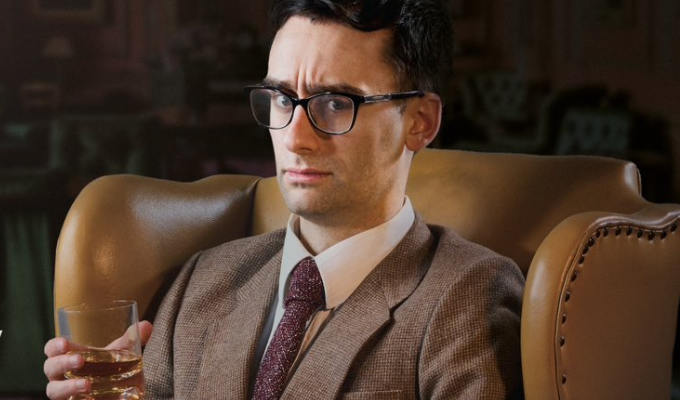
Michael Brunstrom: The Hay Wain Reloaded
Note: This review is from 2016
Review by Steve Bennett
Sister Wendy was never like this. Absurdist Michael Brunstrom offers a most eccentric take on art history, relating the story of John Constable’s masterpiece in a way just as likely to bemuse as amuse.
He uses the painting primarily as a jumping-off point for three surreal, extended sketches about Noel Edmonds’s deepest secrets, fashion icons whaling off Nova Scotia and an scene involving a 1990s celebrity that’s virtually indescribable. Or at least you wouldn’t believe it, if it were to be described.
For whatever you say about Brunstrom, you cannot fault his commitment to the weirdness. Dance like nobody’s watching, they say, and he applies the same ethos to acting out crazy ideas which the more easily embarrassed might keep in their heads. Instead, he heaps oddness upon oddness.
The risk of self-indulgence is ever-present, though Brunstrom mostly sidesteps it. Nonetheless, he is clearly amusing himself first and never forces his strangeness, just invites the audience to share in his unselfconscious performance. There’s always a bit of distance, though, making it difficult to get completely immersed in this very alternate world, for all that’s admirable about his distinctiveness
That’s not to say the show is without the near-obligatory audience interaction, which is well-handled, with the aim of making his ‘volunteers’ feel like playmates in the fantasy world he’s creating. Brunstrom breaks the ice by instigating a couple of in-jokes, and by making himself the victim in an hilariously silly reading of a Wordsworth poem against the odds.
There are plenty of laughs, too, at the sheer audacity of his eccentric ambition and the bizarre juxtapositions he evokes. Sometimes, too, there’s more than that, a wry aside, a strong, silly idea, or subtle breaks in his pretence that make it more than just randomness.
For there is a purpose, however cockeyed, here. While the three main skits allegedly show Constable’s triple inspirations – nature, work and nostalgia – they are loosely splattered onto a canvas that purports to show something of Constable’s world: his defiance of the fashionable romanticism so prevalent at the time, or the disappointment his industrialist father must have felt at his son’s early failings to make an impact in an insecure career.
We can only imagine if there are parallels in Brunstrom’s life as he stands in front of us in his unflattering underwear, bucking the mainstream trend for everyday anecdotes in favour of unabashed absurdity.
Will future generations come to see Brunstrom as a visionary artist? Come back to me in 200 years…
Review date: 7 Aug 2016
Reviewed by: Steve Bennett
Reviewed at:
Dragonfly








